The Yellow River Ancient Course Ruins: Where Nature Meets Ancient Civilization
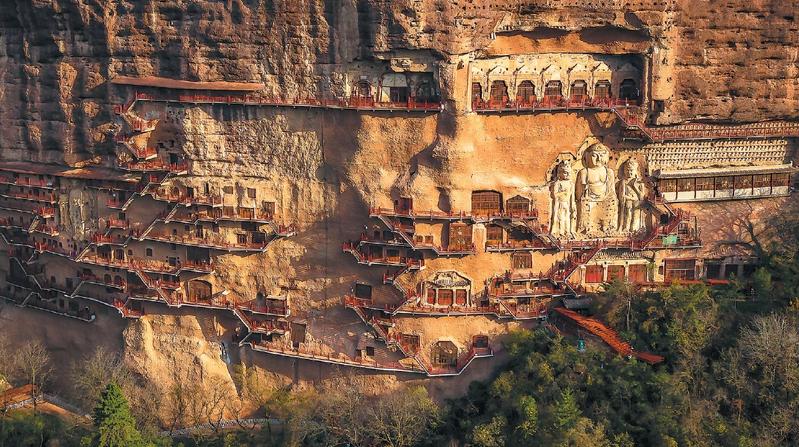
An Essential Guide to Visiting Yellow River Ancient Course Ruins
In This Guide
- An Essential Guide to Visiting Yellow River Ancient Course Ruins
- The Rich History and Legends of Yellow River Ancient Course Ruins
- Main Highlights: What You Absolutely Can’t Miss
- Planning Your Visit: A Practical Guide
- Tickets: Prices, Booking, and Tips
- How to Get There: A Complete Transportation Guide
- Local Cuisine and Accommodation Nearby
- Frequently Asked Questions
- Final Thoughts on Your Trip
The winding waters of the Yellow River, known as the Huang He, are not merely a geographical feature; they are the very cradle of Chinese civilization. Stretching over 5,400 kilometers through a landscape rich in history, the Yellow River has nurtured countless generations and has been a silent witness to the rise and fall of dynasties. For international travelers with a keen interest in history and culture, exploring the Yellow River Ancient Course Ruins offers an unparalleled opportunity to connect with the roots of one of the world’s oldest civilizations.
Why Visit the Yellow River Ancient Course Ruins?
Visiting the Yellow River Ancient Course Ruins is like stepping into a living museum that chronicles the evolution of Chinese society from its Neolithic beginnings to the sophisticated dynasties that emerged along its banks. Here, you will find archaeological sites that reveal the agricultural innovations, social structures, and spiritual beliefs of the peoples who thrived in this fertile region. As you traverse the ancient paths once trodden by early farmers and rulers, the air is thick with the echoes of history, making each site a poignant reminder of humanity’s resilience and creativity.
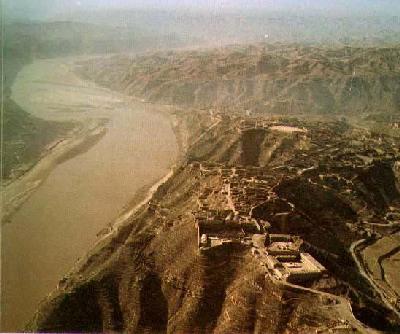
Yellow River Ancient Course Ruins.
Key Highlights
- Archaeological Significance: The ruins along the Yellow River are home to some of the earliest evidence of organized society, including remnants of villages, pottery, and tools that date back thousands of years.
- Cultural Richness: From the legendary Xia dynasty to the powerful Shang and Zhou dynasties, each period has left its mark, contributing to the rich tapestry of Chinese culture that continues to influence the world today.
- Breathtaking Landscapes: The scenic vistas surrounding the river, from the loess plateaus to the lush plains, provide not only a backdrop for your exploration but also a serene setting to reflect on the profound history encapsulated in this region.
As you embark on this historical journey, prepare to be captivated by tales of ingenuity and tenacity. The Yellow River Ancient Course Ruins are more than just remnants of the past; they are a testament to the enduring spirit of a civilization that has thrived against all odds. Whether you’re a history buff, a culture enthusiast, or simply a curious traveler, this destination promises an enriching experience that will deepen your understanding of not just China, but the very essence of human civilization.
The Rich History and Legends of Yellow River Ancient Course Ruins
The Yellow River, often referred to as the “Mother River of China,” is not just a geographical landmark; it is a profound symbol of the soul of Chinese civilization. Flowing through the heart of the country, the river has cradled the rise of ancient cultures, nurtured dynasties, and inspired countless legends that echo through the corridors of time. As you journey along the ancient course of the Yellow River, you will not only witness remarkable archaeological ruins but also uncover stories that have shaped the identity of a nation.
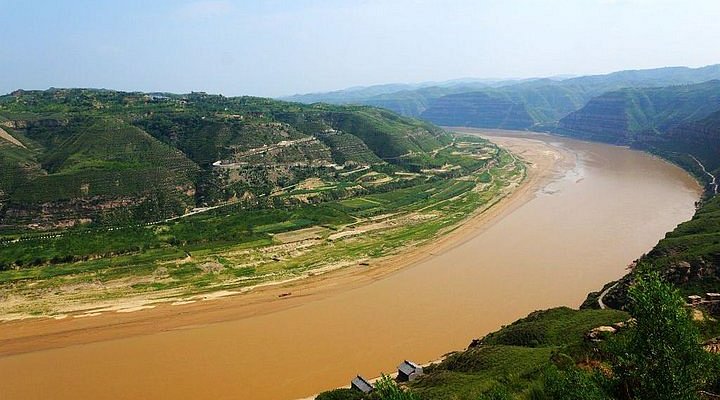
Yellow River Ancient Course Ruins.
The Birthplace of Civilization
The history of the Yellow River Civilization dates back thousands of years, marking it as one of the earliest and most influential river valley civilizations in the world. The fertile banks of the river supported early agricultural communities, paving the way for the rise of complex societies. The Neolithic era saw the establishment of settled villages, where millet farming became the foundation of sustenance. Over time, these small communities evolved into bustling towns and eventually into powerful city-states, setting the stage for the emergence of China’s first dynasties.
Key Historical Milestones
- Neolithic Foundations (c. 7000–5000 BCE):
- Early cultures like Peiligang and Cishan established farming settlements along the river’s banks.
-
Evidence of millet cultivation and the use of stone tools hints at the agricultural innovations of these societies.
-
Xia Dynasty (c. 2070–1600 BCE):
- Often regarded as the first dynasty of China, the Xia marked the transition from Neolithic cultures to a centralized state.
-
The establishment of flood control measures underscored the importance of managing the river’s unpredictable nature.
-
Shang Dynasty (c. 1600–1046 BCE):
- Known for its advanced bronze technology and urban culture, the Shang left behind monumental archaeological sites, including the capital Anyang.
-
The discovery of oracle bones during this period represents the earliest form of Chinese writing and reflects the importance of ancestor worship and ritual.
-
Zhou Dynasty (c. 1046–256 BCE):
- Building on the foundations laid by the Shang, the Zhou introduced the concept of the “Mandate of Heaven,” influencing Chinese political philosophy for centuries.
- The period saw significant cultural advancements, including philosophical thought and arts, that would resonate throughout Chinese history.
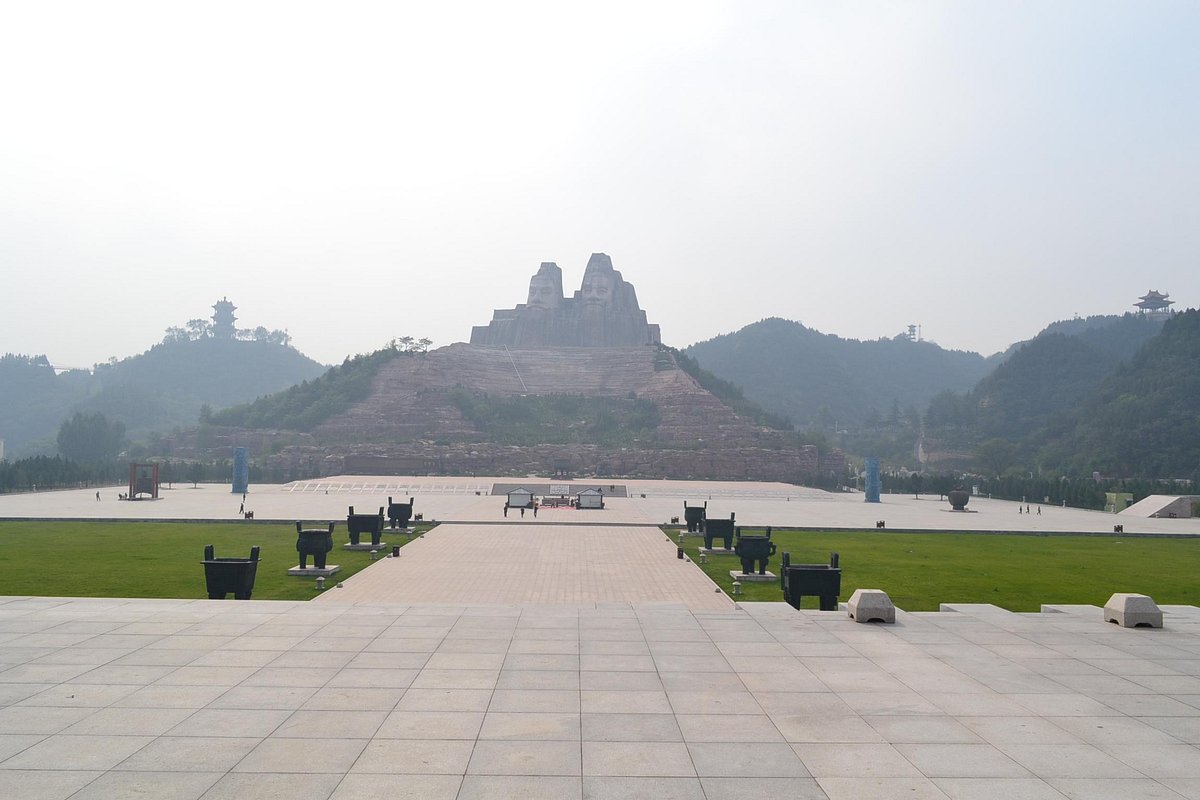
Yellow River Ancient Course Ruins.
Legends of the Yellow River
The Yellow River is steeped in mythology, with numerous legends that highlight its significance in the hearts and minds of the Chinese people. These stories often intertwine with historical events and figures, adding a mystical layer to the ancient course’s rich tapestry.
-
The Legend of the Yellow Emperor:
The Yellow Emperor, Huang Di, is considered a legendary figure in Chinese culture and is often credited with founding Chinese civilization. According to myth, he led his people to victory against rival tribes along the Yellow River, uniting them under his rule and laying the groundwork for Chinese society. His association with agriculture and innovation symbolizes the river’s role in nurturing civilization. -
The Great Yu and Flood Control:
One of the most famous legends associated with the Yellow River is that of the Great Yu (Da Yu), who is celebrated for his efforts to control the river’s devastating floods. Yu’s legendary perseverance and dedication allowed him to tame the river, transforming it from a source of destruction into a lifeline for agriculture. His story reflects the profound respect the ancient Chinese had for nature and the need to coexist harmoniously with it. -
The River’s Sorrow:
The Yellow River is often referred to as “China’s Sorrow” due to its unpredictable floods that have historically caused devastation. This duality is captured in folklore, where the river is both a giver of life and a harbinger of disaster. Many tales speak of communities that thrived on its banks only to be swept away by its wrath, reminding travelers of the delicate balance between civilization and nature.
Discovering the Ruins
As you explore the Yellow River Ancient Course Ruins, you will find remarkable sites that tell the stories of these legendary figures and historical milestones. The ruins, scattered across provinces such as Shaanxi and Henan, offer a glimpse into the lives of the people who once called this region home. From ancient pottery and tools to the remnants of grand palaces and fortifications, each artifact you encounter is a testament to the ingenuity and spirit of the early Chinese civilizations.
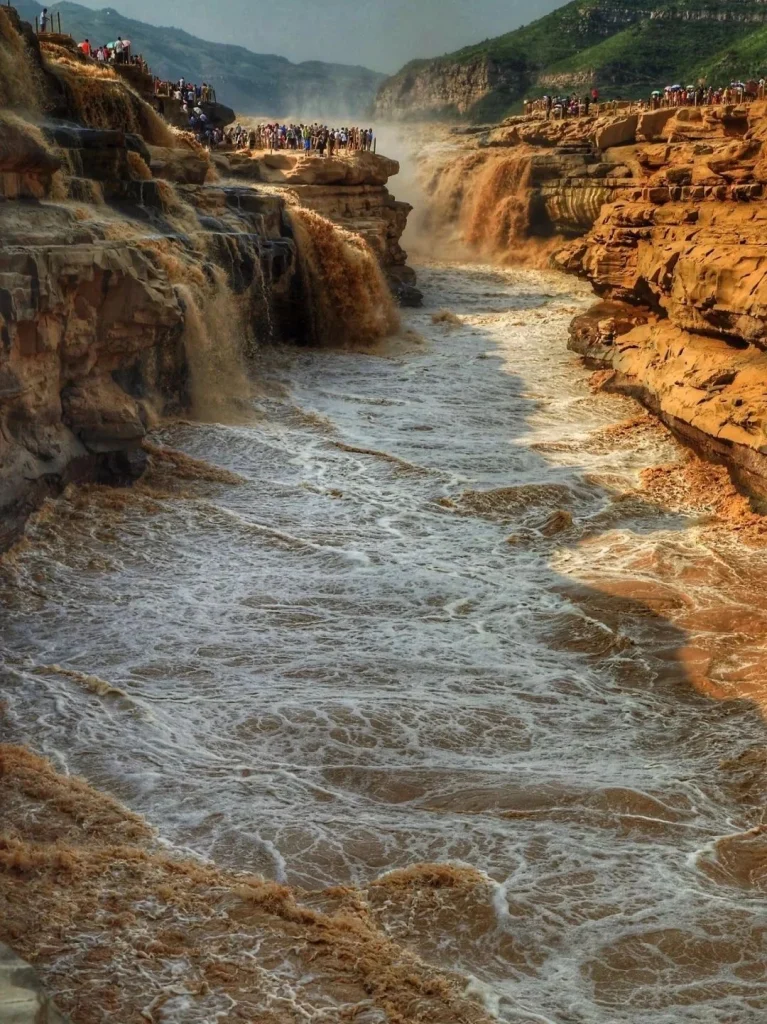
Yellow River Ancient Course Ruins.
Conclusion
The Yellow River is more than just a body of water; it is the lifeblood of Chinese history and culture. As you walk along its ancient course, you engage with the stories and legends that have shaped the identity of a nation. The ruins you discover are not mere remnants of the past; they are a bridge connecting you to the resilience, creativity, and enduring legacy of the people who flourished along its banks. Embrace the journey, and let the whispers of history guide you through the rich landscape of the Yellow River’s ancient course.
Main Highlights: What You Absolutely Can’t Miss
Exploring the Rich Heritage of the Yellow River Ancient Course Ruins
The Yellow River, often referred to as the “Mother River” of China, has been a lifeline for civilizations for thousands of years. Its ancient course, marked by the ruins of once-thriving settlements, offers travelers a unique opportunity to delve into the heart of Chinese history and culture. Here are the main highlights that you absolutely can’t miss during your visit to the Yellow River Ancient Course Ruins.
1. The Ruins of Erlitou
- Significance: Often associated with the legendary Xia Dynasty, the Erlitou site is one of the earliest urban centers in Chinese history.
- Must-See: Explore the remnants of palatial structures, bronze workshops, and organized residential zones that hint at the emergence of state-level societies around 2000 BCE. The site’s excavation provides invaluable insights into the transition from Neolithic cultures to centralized governance.
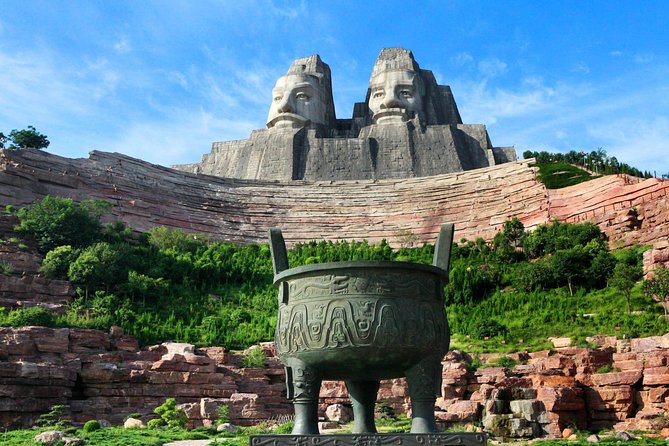
Yellow River Ancient Course Ruins.
2. Ancient City of Anyang
- Cultural Legacy: As the last capital of the Shang Dynasty, Anyang is vital for understanding the development of early Chinese writing and ritual practices.
- Highlights: Visit the ruins of royal tombs and the famous oracle-bone inscriptions, which are the oldest known form of Chinese writing. The site also showcases advanced bronze technology and large-scale ritual vessels.
3. The Loess Plateau
- Geographical Marvel: This region, characterized by its fertile loess soil, is not only beautiful but also integral to the development of agriculture in ancient China.
- Activities: Consider a hiking trip or guided tour to appreciate the stunning landscapes and learn how the unique soil composition supported early farming communities that flourished along the Yellow River.

Yellow River Ancient Course Ruins.
4. The Peiligang Culture Sites
- Historical Context: As one of the earliest known cultures along the Yellow River (c. 7000–5000 BCE), the Peiligang sites provide a snapshot of early agricultural societies.
- Explore: Discover the remnants of ancient villages where millet was cultivated, and stone tools were crafted. The archaeological findings here illustrate the foundations of Chinese society and its reliance on agriculture.
5. The Longshan Culture Remains
- Emergence of Urbanization: Dating back to around 3000–1900 BCE, the Longshan culture marks a period of significant urban development and social stratification.
- Experience: Walk through the remains of walled towns and view artifacts that reflect the emergence of chiefdoms and early state structures, providing an understanding of societal organization and competition in ancient times.
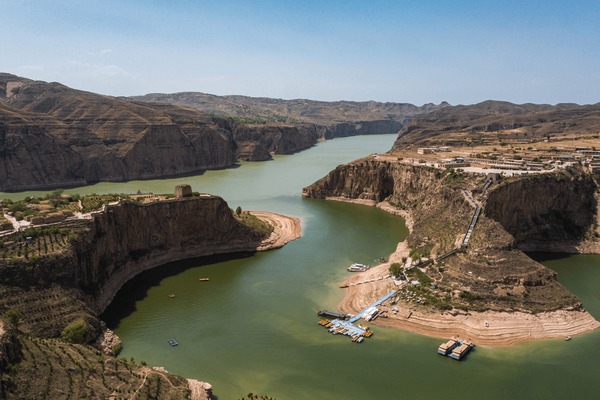
Yellow River Ancient Course Ruins.
6. Cultural Museums and Exhibitions
- Educational Resources: Numerous museums along the Yellow River offer exhibitions detailing the history and cultural significance of the civilizations that thrived along its banks.
- Don’t Miss: The Henan Museum, located in Zhengzhou, features extensive collections of artifacts from the Yellow River civilization, including ceramics, tools, and decorative items that tell the story of life thousands of years ago.
7. River Cruises on the Yellow River
- Unique Perspective: Experience the Yellow River from a different vantage point by taking a river cruise.
- What to Expect: Enjoy scenic views of ancient towns along the banks while learning about the river’s role in shaping the development of Chinese civilization. A cruise can provide a relaxing and immersive way to appreciate the historical significance of this mighty river.

Yellow River Ancient Course Ruins.
8. Local Cuisine and Cultural Experiences
- Taste the History: While exploring the Yellow River region, indulge in local dishes that have been influenced by the agricultural practices of ancient civilizations.
- Recommendations: Don’t miss sampling traditional foods such as steamed buns and noodle dishes, which have roots in the very crops cultivated by ancient inhabitants of the Yellow River basin.
9. Engage with Local Communities
- Cultural Interaction: Engage with local communities to learn about their traditions and how they continue to celebrate their heritage linked to the Yellow River.
- Activities: Participate in local festivals or workshops that showcase traditional crafts, music, and dance, providing a deeper connection to the region’s rich cultural tapestry.
Conclusion
A journey through the Yellow River Ancient Course Ruins is not just a trip through time; it’s an exploration of the very foundations of Chinese civilization. From ancient ruins to vibrant local culture, every aspect of this journey offers a glimpse into the resilience and innovation that has characterized this remarkable region for millennia. As you traverse the landscapes that shaped the course of history, you’ll find that the echoes of the past resonate powerfully in the present.
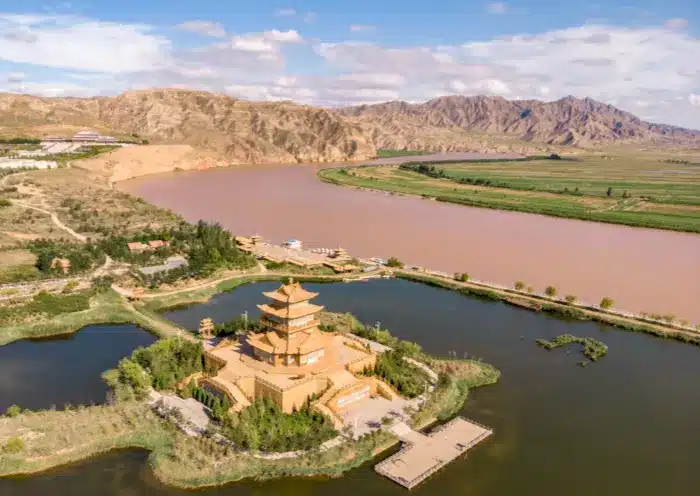
Yellow River Ancient Course Ruins.
Planning Your Visit: A Practical Guide
Your Essential Guide to Visiting the Yellow River Ancient Course Ruins
Embarking on a journey to the Yellow River Ancient Course Ruins (黄河故道) is more than just a visit to a historical site; it’s an immersion into the cradle of Chinese civilization. This region, steeped in thousands of years of history, offers international travelers a unique opportunity to connect with the roots of Chinese culture and heritage. Here’s everything you need to know to plan your visit effectively.
Getting to the Yellow River Ancient Course Ruins
Location:
The Yellow River Ancient Course Ruins are located primarily in present-day Henan Province, with significant sites also found in Shaanxi and Shanxi provinces. The closest major city is Zhengzhou, which serves as an excellent base for your explorations.
Transportation:
– By Air: The nearest airport is Zhengzhou Xinzheng International Airport, which connects to major cities in China and some international destinations.
– By Train: Zhengzhou has a well-connected railway network. High-speed trains from Beijing, Shanghai, and Xi’an make traveling comfortable and efficient.
– By Bus: Local buses and long-distance coaches are available from major cities to various towns near the ruins.
– Car Rentals: If you prefer flexibility, consider renting a car. Roads are in good condition, and driving allows for easy access to remote sites.

Yellow River Ancient Course Ruins.
Best Time to Visit
Seasons:
– Spring (March to May): Ideal for pleasant weather and blooming scenery, making it a perfect time for photography and outdoor exploration.
– Autumn (September to November): Another great season, with clear skies and comfortable temperatures. The fall foliage adds to the beauty of the landscape.
– Summer (June to August): This is the peak tourist season, but it can be hot and humid. If you visit during this time, stay hydrated and wear sun protection.
– Winter (December to February): While it’s less crowded, the cold can deter some travelers. However, the serene beauty of the snowy landscape is enchanting for those willing to brave the chill.
What to See
Key Attractions:
– Ancient Ruins: Explore archaeological sites that date back to the Neolithic period, showcasing early agricultural practices and societal structures.
– Museums: Visit local museums such as the Henan Museum in Zhengzhou, which houses artifacts from the Yellow River Civilization, including pottery, tools, and bronze relics.
– Natural Landscapes: Enjoy the picturesque views along the Yellow River, including scenic walking trails and picnic spots.
– Cultural Sites: Don’t miss the chance to experience local culture through traditional performances, local cuisine, and nearby historical towns such as Luoyang and Kaifeng.
Cultural Etiquette
Respect Local Customs:
– Always greet locals with a smile and a polite nod.
– When visiting temples or historical sites, dress modestly and be respectful of the surroundings.
– Photography may be restricted in certain areas; always check for signs or ask permission.
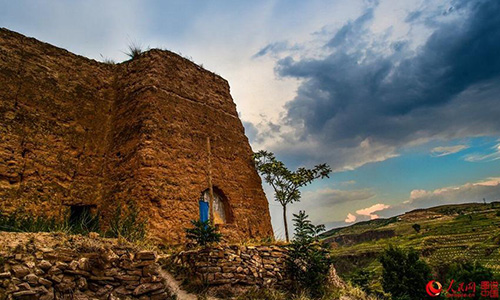
Yellow River Ancient Course Ruins.
Where to Stay
Accommodation Options:
– Luxury Hotels: For a comfortable stay, consider high-end hotels in Zhengzhou, offering modern amenities and easy access to attractions.
– Boutique Hotels: Experience local charm at boutique hotels that reflect the region’s culture.
– Hostels: If you’re on a budget, hostels in Zhengzhou provide affordable options with social atmospheres for meeting fellow travelers.
Local Cuisine to Try
Must-Try Dishes:
– Noodles: Sample the famous Henan noodles, known for their unique flavors and handmade preparation.
– Dumplings: Enjoy a variety of dumplings, a staple in Chinese cuisine.
– Local Snacks: Don’t forget to try street food like Jianbing (Chinese crepes) and various fried pastries.
Safety Tips
- Health Precautions: Stay hydrated, especially during the summer months, and be cautious with street food if you have a sensitive stomach.
- Emergency Contacts: Familiarize yourself with local emergency numbers and have a translation app handy for communication.
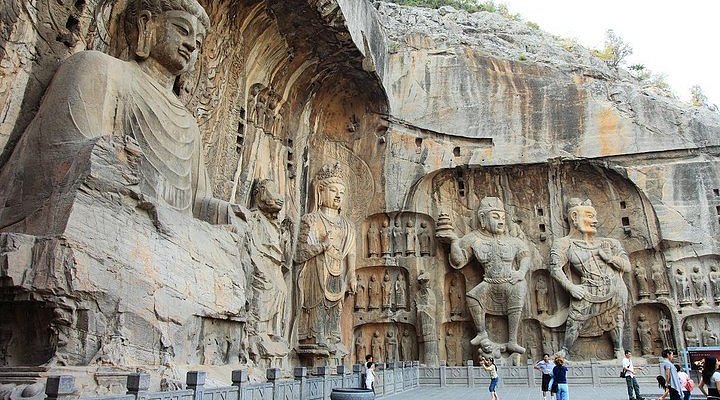
Yellow River Ancient Course Ruins.
Final Thoughts
Visiting the Yellow River Ancient Course Ruins offers a profound glimpse into the heart of Chinese civilization. With its rich history, breathtaking landscapes, and vibrant culture, this journey promises to be an unforgettable experience. By planning ahead and embracing the local spirit, you will not only witness the remnants of ancient cultures but also feel the pulse of a civilization that has thrived for millennia. Enjoy your travels!
Tickets: Prices, Booking, and Tips
Ticket Information for Exploring the Yellow River Ancient Course Ruins
Embarking on a journey to the Yellow River Ancient Course Ruins (黄河故道) offers a unique opportunity to connect with the very roots of Chinese civilization. To ensure a smooth and enriching experience, here’s everything you need to know about ticket prices, booking procedures, and helpful tips for your visit.
Ticket Prices
- General Admission:
- Adults: ¥50 (approximately $8 USD)
- Students & Seniors: ¥30 (approximately $5 USD) with valid identification.
-
Children under 12: Free admission (must be accompanied by an adult).
-
Guided Tours:
- Standard Group Tour: ¥150 (approximately $22 USD) per person, includes a professional guide and entry.
-
Private Tour: Starting from ¥800 (approximately $120 USD) for a group of up to 4 people, providing a personalized experience.
-
Special Exhibitions:
- Occasionally, temporary exhibitions may incur an additional fee of ¥20 (approximately $3 USD).
Booking Procedures
- Online Reservations:
-
Tickets can be conveniently booked through the official website of the Yellow River Ancient Course Ruins or popular travel platforms such as Ctrip and Trip.com. It is advisable to book in advance, especially during peak tourist seasons (April to October).
-
On-Site Purchase:
-
Tickets can also be purchased at the entrance of the venue. However, during busy periods, you may encounter long lines, so arriving early is recommended.
-
Group Bookings:
- For groups of 10 or more, it’s best to contact the site in advance at their official email or phone number, ensuring a smooth arrival and possible discounts.
Tips for Your Visit
- Best Time to Visit:
-
The ideal time to explore the ruins is during the spring (March to May) and autumn (September to November) months, when the weather is mild and the natural scenery is at its most picturesque.
-
What to Bring:
-
Comfortable walking shoes are a must, as you will be exploring various terrains. Additionally, bringing a water bottle, sunscreen, and a hat will ensure you stay hydrated and protected from the sun.
-
Guided Tours:
-
Opting for a guided tour can greatly enhance your understanding of the historical significance of the ruins. Knowledgeable guides can provide insights that you might miss while exploring on your own.
-
Local Cuisine:
-
Don’t miss the chance to try local delicacies available at nearby eateries. The region is known for its traditional dishes, which reflect the rich history and culture of the Yellow River civilization.
-
Photography Tips:
- Capture the beauty of the ruins and surrounding landscapes, but be mindful of any signs regarding photography restrictions, particularly in sacred areas.
Visiting the Yellow River Ancient Course Ruins is not merely a trip; it’s an immersive journey into the cradle of Chinese civilization. With this ticketing information and tips at your disposal, you’re well-equipped to explore the historical tapestry woven along the banks of this mighty river. Enjoy your adventure!
How to Get There: A Complete Transportation Guide
Navigating to the Yellow River Ancient Course Ruins
Embarking on a journey to the Yellow River Ancient Course Ruins (黄河故道) is an opportunity to immerse yourself in the cradle of Chinese civilization. This guide will provide you with all the essential information you need to reach this historic site.
Getting There: Transportation Options
1. By Air:
The nearest major airport to the Yellow River Ancient Course Ruins is Zhengzhou Airport (CGO). This airport is well-connected with domestic flights from major cities like Beijing, Shanghai, and Guangzhou.
- Airport Transfer:
- From Zhengzhou Airport, you can hire a taxi or use a rideshare app to reach the city center.
- Alternatively, take the airport shuttle bus to Zhengzhou Railway Station for further travel.
2. By Train:
Zhengzhou Railway Station is a vital hub in China’s high-speed train network. Once you arrive in Zhengzhou, you can easily continue your journey:
- To Yellow River Ancient Course Ruins:
- Train to Kaifeng: Take a high-speed train from Zhengzhou to Kaifeng (approximately 30 minutes).
- Local Transport: From Kaifeng, you can take a taxi or local bus to reach the ruins, located about 20 km away.
3. By Bus:
If you prefer a more budget-friendly option, long-distance buses operate from various cities directly to Kaifeng.
- Bus Stations:
- Buses depart frequently from Zhengzhou Long-Distance Bus Station to Kaifeng (around 1-1.5 hours).
- Once in Kaifeng, use local taxis or buses to access the ruins.
4. By Car:
For those who enjoy flexibility, renting a car can be a rewarding way to explore the area at your own pace.
- Driving Directions:
- From Zhengzhou, take the G30 expressway toward Kaifeng.
- Follow signage to the Yellow River Ancient Course Ruins, which is well-marked.
Local Transportation
Once you arrive in the vicinity of the Yellow River Ancient Course Ruins, the local transportation options include:
- Taxis and Rideshare Services: Widely available and convenient for short distances.
- Bicycles and E-scooters: Rentable in nearby towns, offering a scenic way to explore the area.
- Guided Tours: Consider joining a guided tour that includes transportation, providing insights into the historical significance of the ruins.
Best Time to Visit
While the Yellow River Ancient Course Ruins can be visited year-round, the ideal time to go is during spring (April to June) and autumn (September to November) when the weather is mild and pleasant.
Conclusion
With this transportation guide, reaching the Yellow River Ancient Course Ruins should be a seamless part of your adventure into the depths of Chinese history and culture. Whether you choose to fly, take a train, or drive, the journey itself will be a rewarding experience as you connect with the ancient civilizations that flourished along the banks of China’s “Mother River.”
Local Cuisine and Accommodation Nearby
Exploring the ancient course of the Yellow River is not just a journey through history; it’s also a delightful culinary adventure that immerses you in the rich flavors of the region. As you delve into the remnants of this cradle of Chinese civilization, indulge in the local cuisine that has evolved over millennia, and find welcoming accommodations nearby that enhance your experience.
Culinary Delights of the Yellow River Region
The Yellow River basin is renowned for its unique culinary traditions, heavily influenced by the fertile loess soil and the agricultural practices of its ancient inhabitants. Here are some must-try dishes that reflect the essence of this historic region:
-
Mizhi Noodle: Originating from the Mizhi County in Shaanxi, these thick, hand-pulled noodles are typically served in a rich broth with assorted toppings. The noodles represent the deep-rooted agricultural practices of the area, as they are often made from locally cultivated wheat.
-
Shaanxi Roujiamo: Often referred to as the “Chinese hamburger,” this dish consists of tender, braised meat stuffed inside a flatbread. It’s a hearty snack that showcases the region’s love for meat and bread, making it a perfect on-the-go meal after a day of exploration.
-
Yellow River Carp: Known for its tender flesh and delicate flavor, this freshwater fish is a regional specialty. It can be found in various preparations, such as steamed with ginger and scallions or braised in a savory sauce, providing a taste of the river’s bounty.
-
Steamed Buns (Mantou): These fluffy steamed buns are a staple in Northern Chinese cuisine. Often served as a side dish, they can also be filled with sweet or savory fillings, reflecting the local palate.
-
Millet Porridge: As the ancient grains that once fed the earliest civilizations along the Yellow River, millet porridge remains a popular breakfast choice today. It is often enjoyed with pickled vegetables or nuts, offering a taste of history with each spoonful.
Where to Stay
To fully immerse yourself in the historical and cultural significance of the Yellow River Ancient Course, consider these accommodations that blend comfort with local charm:
-
Lanzhou Riverside Hotel (兰州滨江酒店)
Located along the banks of the Yellow River, this hotel offers panoramic views and easy access to scenic spots. With modern amenities and traditional decor, it provides a perfect base for exploring the area. The on-site restaurant serves a variety of local dishes, ensuring you can savor the flavors of the region without venturing far. -
Dingxi International Hotel (定西国际大酒店)
Situated in Dingxi, this hotel combines comfort with convenience. Its proximity to historical sites makes it an ideal choice for travelers keen on sightseeing. Guests can enjoy local cuisine at the hotel’s restaurant, featuring dishes that highlight the ingredients sourced from the surrounding areas. -
Kaifeng Grand Hotel (开封大酒店)
In the heart of Kaifeng, a city steeped in history, this hotel provides a luxurious experience with a touch of local culture. Its restaurant specializes in traditional Henan cuisine, allowing guests to explore the region’s culinary heritage. -
Xian Central Hotel (西安中心大酒店)
A short drive from the Yellow River sites, this hotel offers modern comforts alongside easy access to Xian’s historical attractions. The hotel’s dining options include a selection of local specialties, making it a convenient choice for food enthusiasts.
Final Thoughts
As you traverse the ancient landscapes of the Yellow River, take the time to indulge in the local cuisine that has nourished generations and find accommodations that offer a glimpse into the region’s storied past. Each meal and every night’s stay is a step deeper into understanding the culture and history that have shaped this remarkable area of China. Whether you are savoring a bowl of Mizhi noodles or resting in a cozy hotel, the Yellow River will leave an indelible mark on your journey through the cradle of Chinese civilization.
Frequently Asked Questions
Frequently Asked Questions
1. What are the Yellow River Ancient Course Ruins?
The Yellow River Ancient Course Ruins, or 黄河故道, refer to the remnants of ancient civilizations that developed along the Yellow River, often considered the cradle of Chinese culture. These ruins showcase the evolution of early farming settlements into complex societies that contributed significantly to Chinese history.
2. Where are the ruins located?
The ruins are primarily found along the middle and lower reaches of the Yellow River, spanning several provinces including Qinghai, Gansu, Ningxia, Inner Mongolia, Shaanxi, Shanxi, Henan, and Shandong. Key cities to visit include Xi’an, Luoyang, and Kaifeng, each rich in historical relics.
3. What is the best time to visit?
The ideal time to visit the Yellow River Ancient Course Ruins is during spring (March to May) and autumn (September to November) when the weather is mild and the landscapes are particularly beautiful. Avoiding the summer heat and winter cold will enhance your exploration experience.
4. How can I get to the ruins?
Accessing the ruins can vary by location. Major cities like Xi’an and Luoyang are well-connected by rail and air. From there, local transportation options such as buses and taxis can take you to specific archaeological sites. Guided tours are also available for a more comprehensive experience.
5. What should I expect to see at the ruins?
Visitors can expect to see ancient city layouts, pottery remnants, bronze artifacts, and various burial sites. Important sites may also include reconstructed villages and museums that provide insights into the life and culture of early Chinese civilizations.
6. Are there any guided tours available?
Yes, several local operators offer guided tours of the Yellow River Ancient Course Ruins. These tours typically include transportation, knowledgeable guides, and sometimes meals. It’s a great way to gain a deeper understanding of the historical significance of the area.
7. What cultural practices originated from the Yellow River Civilization?
The Yellow River Civilization is credited with foundational agricultural practices, early forms of governance, ancestor worship, and advancements in bronze technology. The concepts of social hierarchy and urban planning also emerged during this period, influencing later Chinese cultures.
8. Is it suitable for families and children?
Absolutely! The Yellow River Ancient Course Ruins offer educational experiences that can be enjoyable for families. Interactive exhibitions and guided tours can engage children and adults alike, making it a great opportunity for learning about Chinese history and culture together.
Final Thoughts on Your Trip
As you conclude your journey along the ancient course of the Yellow River, take a moment to reflect on the profound legacy that this remarkable waterway has shaped not only in the landscape of China but in the very fabric of human civilization.
The Yellow River, often referred to as the “Mother River of China,” has been the lifeblood of countless generations, nurturing the earliest agricultural societies and giving rise to dynasties that have left indelible marks on history. Walking along its banks, you are not merely observing a river; you are tracing the footsteps of those who pioneered agriculture, governance, and culture in one of the world’s most enduring civilizations.
Key Takeaways from Your Visit:
-
Cultural Richness: You’ve explored sites that echo stories of the Xia, Shang, and Zhou dynasties, each contributing to a rich tapestry of Chinese history that still resonates today.
-
Innovative Spirit: Witness how ancient peoples harnessed the river’s unpredictable nature to develop advanced irrigation techniques and societal structures, exemplifying human resilience and ingenuity.
-
Historical Connection: Engaging with the Yellow River’s ancient ruins provides a unique opportunity to connect with the very roots of Chinese culture, fostering a deeper understanding of the complexities that have shaped modern China.
As you prepare to leave, remember that the spirit of the Yellow River Civilization continues to flow through the lives of the people today. From the bustling cities that dot its banks to the serene landscapes that surround it, the river remains a vital artery of life and culture.
Let the stories of the Yellow River accompany you as you journey onward, enriching your understanding of not just China, but the enduring human story that connects us all. Whether you find inspiration in the ancient past or in the vibrant present, may your travels continue to deepen your appreciation for the world’s diverse cultures and histories.